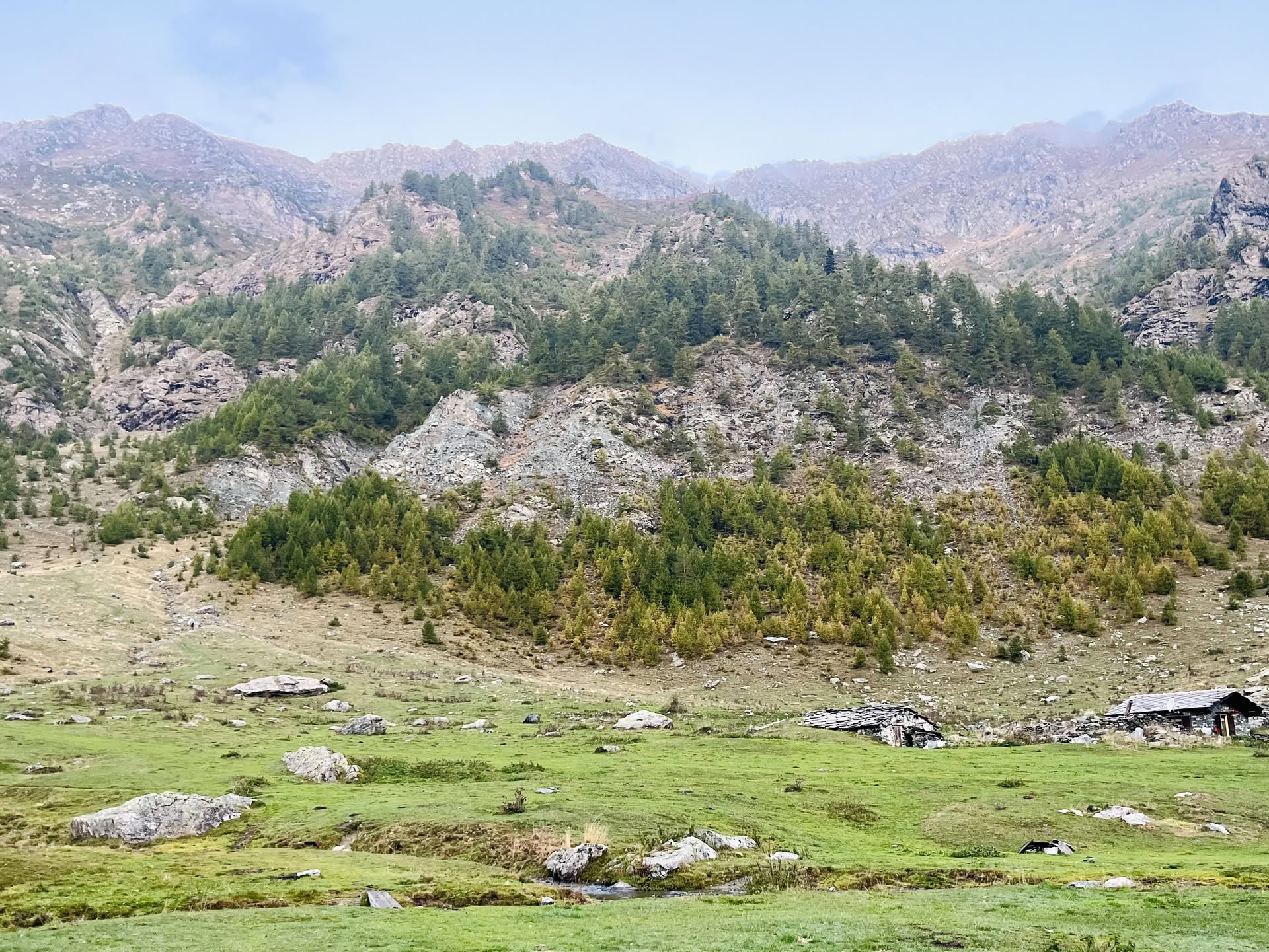
Scale Sensing: The Dance Between Geologic and Biological Time
By Willow Gatewood
Sign up for our monthly newsletter!
Peaks sing in soft blues, notes of lavender speckle the melody when the sun catches heather flowers just right. Yet this gentleness drifts over stone that hums with the violence of crashing boulders and breaking bones. This is mountain melody, mountain memory. While the delicate explosion of life above may speak in soft mosses and wildflowers dainty as jewels, rock foundations remember centuries of trauma, pressure and fire, unimaginable forces that twist and shape them into rainbow layers that peek out from under sphagnum.
The landscape is both life-giver and life-taker. Minerals mingled with the chemistry of the biotic realm build the basis of bodies. Magma within Earth’s core shifts stones, spews acrid gas that stinks more than tar, erupts like a fiery dragon, and scorch the landscape black. Stone builds mountains; life and Earth’s climate eat them down and weather them into crumbling towers. Push and pull, tension between elements, is important: both must give to survive. This is important to remember.
I stand like a speck of dust among ancient conifers and white-capped peaks, touch each stone with the reverence one might show a god. Where larch forest dissolves and rocks rise into lichen-crusted fortresses, I kneel. Here, it is easier to understand, or rather hard to ignore, how fleeting and limited my moments of being in the world are: how, as humans, we are all infants.
Geologic time, or deep time, represents Earth’s vast timescales: the eons of slow metamorphic flow under the landscape’s crust, rise and fall of mountains, ice ages, and patterns of climate change, glacial growth and retreat carving lakes from stone, and evolutionary histories. Each process is intertwined, influencing the continual flux of Earth. Changes in geography give rise to new opportunities for living organisms to grow, adapt, and evolve. From lichens that demineralize and eat stone to algae and plants that alter the molecular make-up of Earth’s atmosphere, the process of life shapes stone and climate at planetary scales.
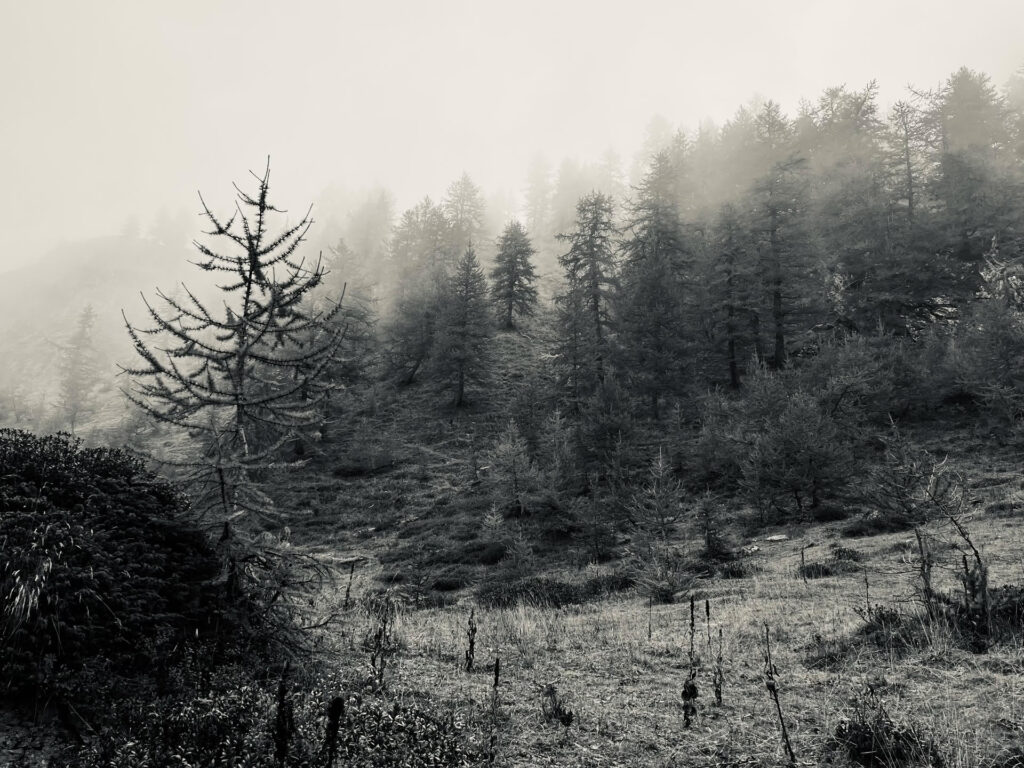
Life and the larger processes of geography and time move in a constant dance of interaction — the climate changes, allowing for organisms to adapt and become what has never been, which in turn changes the climate and alters the face of the earth. I often have a hard time imagining processes that occur over such spans of time and scale; it is often even harder to picture the complex entanglement between stone and flesh. Yet hiking up Monte Viso, the highest mountain of the Cottian Alps, I feel almost as if I can witness these slow-moving processes in real time. Time is fluid; I learn to go slow and feel the burn in my thighs. I learn to notice the life of stone.
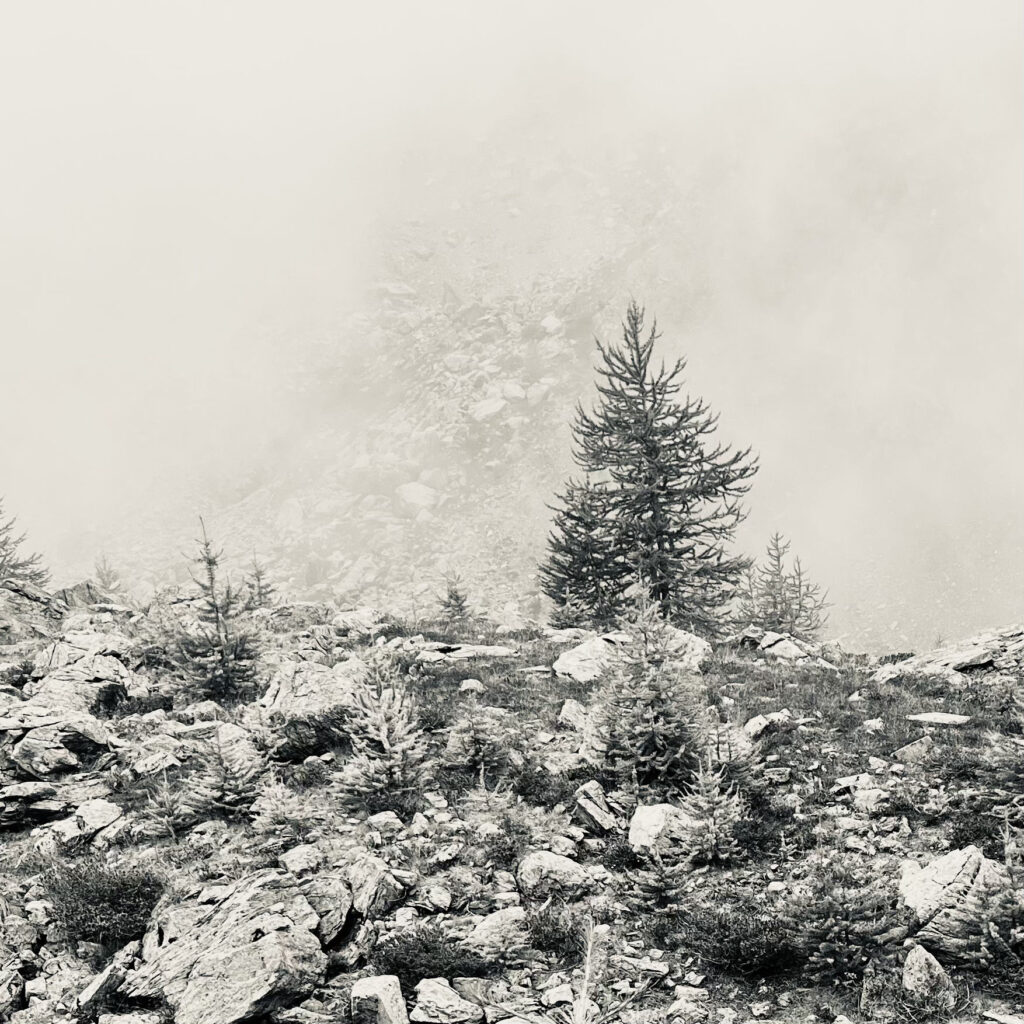
Situated in the Piedmont region at the border of France and Italy, Monte Viso stands at an impressive 3841 meters above sea level, roughly 500 meters above the surrounding Po and Pellice river valleys. The peak hosts unique minerals including jadeite and stone once found under prehistoric oceans, deep blue lakes left by glaciers from the last ice age, and high-altitude European larch forests, sanctuaries that have been minimally disturbed by human activity for centuries. Ancient forests like these are one example of life’s complex relationship with deep time and record of the past. Although often planted and cut in the span of decades, trees are some of the oldest living creatures on the planet. For instance, Great Basin bristlecone pine Methuselah sprouted an estimated 4,600 years ago in California’s White Mountains, before the great pyramids were built (Anderson, 2012). This tree, and many others across the world, witness empires rise and fall and the continual change of Earth’s biosphere.
Trees and their associated biomes are repositories for historical climate data. From tree rings to carbon stored within roots and soils, they serve as time capsules that scientists have used to gain insight into everything from atmospheric conditions to animal migration and the prevalence of insects or fungi. Dendrochronology, or the study of tree rings and the data they show, has helped researchers paint a picture of Earth’s climate thousands of years past (Anderson, 2012). Further, research shows that trees hold climate “memory” and pass on adaptations to new generations of saplings through epigenetic inheritance, or memory coded into genes. Like scientists, trees even make predictions: they not only store data on long-term temperature, rainfall, and CO₂ level trends but grow based on what those trends may tell them about the coming years (Velhal, 2025). In this way, forests are living representations of past, present, and future conditions of life on Earth.
As I and my cohort of fellow scientists and explorers ascend, the landscape changes from towering canopy to shrubby, gnarled larch and blueberries disfigured by wind, snow, and forces of slow-moving stone. I perch beside a larch no taller than my calf. It’s roots grip jadeite and burrow into grey soil. I exhale. Inhale the cool, slightly tangy smell of its needles efflorescing in the mist. This tree could be hundreds of years old. Although small, I remind myself I am still in the company of ancients.
Up here, slow, short, and unassuming triumphs. Taller trees would break from seasonal gales and shatter when ice slides down the mountainside come spring’s thaw. The tree before me has adapted: low, crawling branches with just enough needles to soak up sun when it peaks through clouds. I rub a needle between my fingers. It’s firmer than its lower-altitude cousins, less ready to give up sweet-scented oils. The tree’s trunk is coiled into rocks and well-dressed with bark to protect the softer, living parts of the tree from snow. I stretch low on my elbows — it feels as if the temperature rises at ground level, and I enjoy a respite from watery eyes and wind-slapped cheeks. Below my arms, mahogany-colored roots peek through the grass, and I notice small mushrooms dotting the thin layer of decaying bark.
High alpine ecosystems like these not only give us data of the past and for the future but have played important roles in shaping culture throughout time; further, their health will help shape our future. The European larch is regarded as an important tree of Europe’s heritage — with firm wood resistant to decay, it has been used for timber for decades (Mandolini, E., Bacher, M. & Peintner, U. 2025). Mountaineers developed unique ways of slow harvesting high-altitude timber that involved felling select trees while leaving the rest of the forest undisturbed. These trees were slid down the side of the mountain in a grueling yet rewarding haul honored among generations of timber workers, fabled and celebrated among communities. Deep relationships with forests shaped Europe’s heritage and relationship with high peaks, nourishing communities that relied on timber and other forest products to thrive.
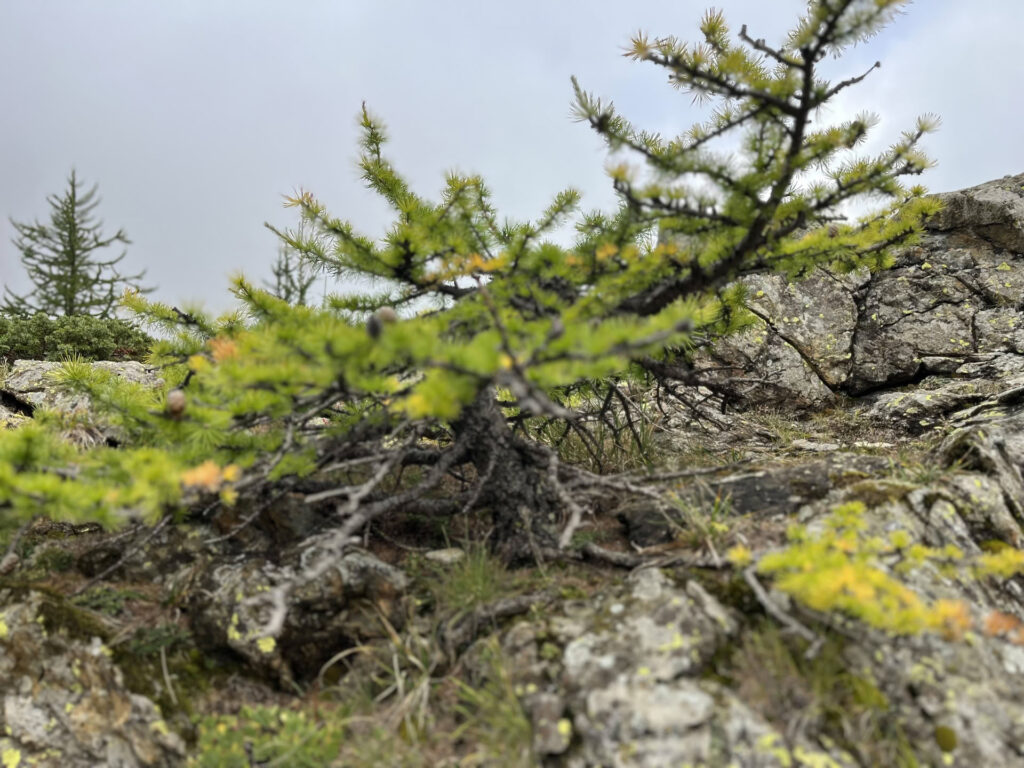
Further, larch develops strong relationships with a diverse array of ectomycorrhizal fungi that entwine with roots to exchange nutrients and act as pathways for information and carbon flows throughout the forest. Deep roots, and fungal hyphae that probe soils even deeper, draw in atmospheric CO2 and capture it underground, feeding the forest above over decades and storing unused carbon that may eventually, generations from now, become stone or gas (Mandolini, E., Bacher, M. & Peintner, U. 2025; Kilpeläinen, A., Peltola, H. 2022). Healthy larch forests have a high capacity for storing carbon within soil — vital carbon “sinks” for a warming world, but modern timber extraction, mono-crop plantations, and human-driven climate change threatens culture and the health, biodiversity, and productivity of regions like Monte Viso.
I wander from my group, leave the forest behind and find a craggy table-top of stone and blunt shrubbery. At this altitude, situated just meters below the peak of Monte Viso, trees are absent but the landscape still blossoms with colors of lichens, small plants, and minerals so vivid it could be from another world. The landscape’s mood shifts dramatically with changes in the sky, creating an ever-morphing face. A cloud covers the sun, and the lake before me, nestled at a mountain crest, fuzzes to steel-grey. Red bushes, something small and in the Ericaceae family, pop against the slate-colored texture of rippling water. Breeze whips hair into the corners of my mouth, and a wave of pain locks my body with the bite of cold. I shiver. In moments, the sky smiles sunny and blue with clouds teased up to the edges of my vision: sun seeps into my bones, and I peel off my coat. The lake shifts from grey to cerulean, and fish dart over smooth stones about three feet under the water’s surface. The transformation is surreal — I walk a delicate line between two realities, alternate dimensions determined by the sun and face of the sky. The scene before me is fluid as water, fluid as air, fluid as my own perception.
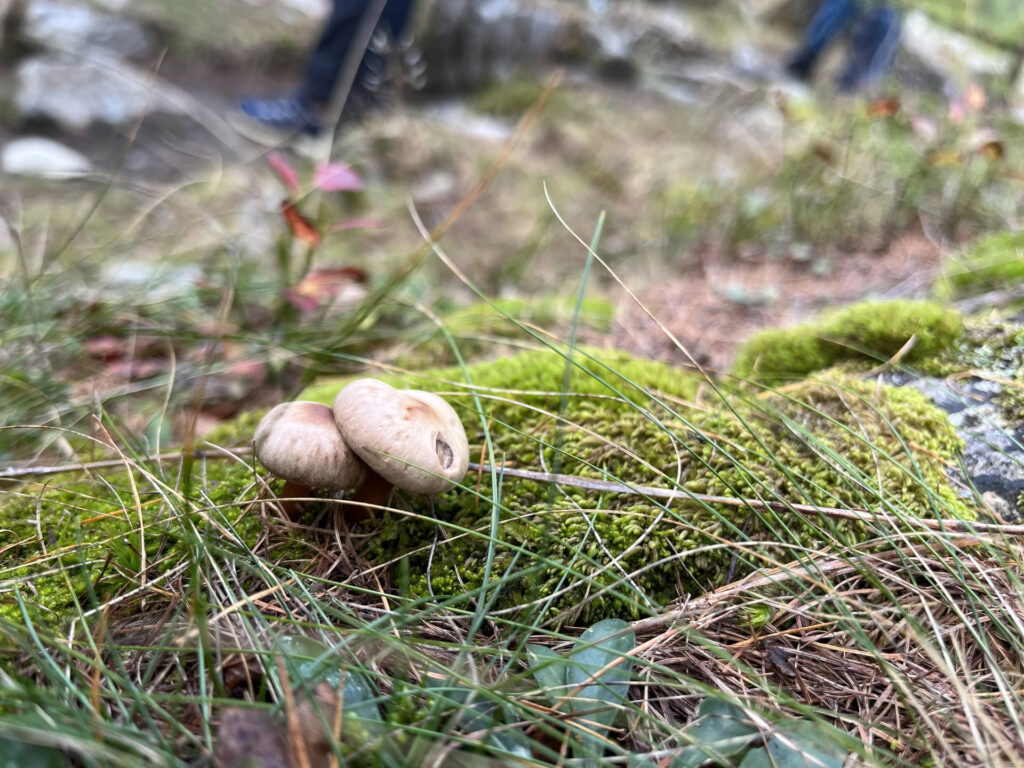
Mountains are constant reminders of time and change: both processes at planetary scales, and also moments so fleeting they exist and change within the span of a butterfly’s wingbeat. I watch rare alpine bumblebees flit over the season’s last wildflowers. Flipping over stones where springs bubble from the ground reveals endangered Lanza’s alpine salamanders, slick and shiny as polished ebony. Within the next decades, these small salamanders could vanish along with a landscape ever-shrinking from encroachment by tourism, severe weather, and blights spurred by warm, wet seasons. Alpine habitats remind us, too, how quickly flora and fauna can disappear.
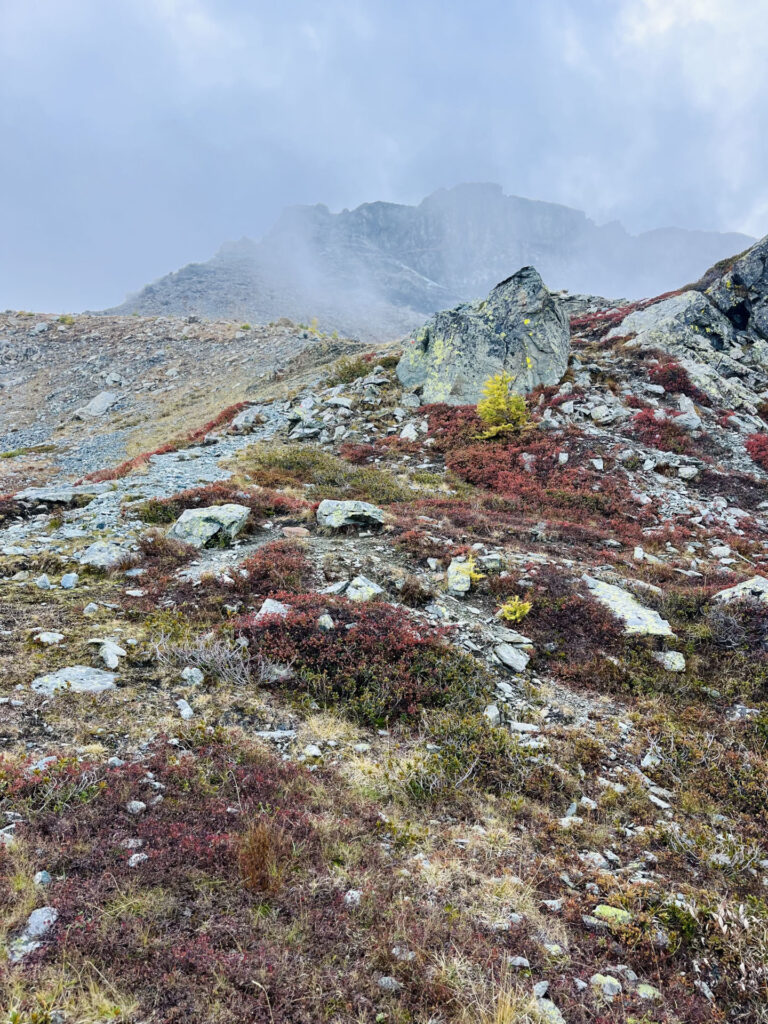
Due to the immense biodiversity and presence of endemic species, which are typically highly specialized species found only in limited ranges, as well as the unique geography dependent on and shaped by hydrologic factors like snow, ice, and glacier melt, the European Alps are particularly threatened by global warming, and these effects ripple into valleys and across continents. Glaciers and ice contained within rock walls melt and leave gaping holes or unstable land, prone to sinking and shifting. Rock walls tumble into deadly landslides as the brush and tree roots that glued them up against the force of gravity die from changes in temperature and water levels. Shifts in alpine hydrology spur catastrophic floods in wet seasons, yet leave less groundwater available for growing seasons, spurring desertification of lowland landscapes and poor crop yields for farming communities (Roveri, G. et. al. 2024). These shifts pose threat to human inhabitants of mountains and valleys even more so than the landscape. We forget human systems are like the delicate meadows grown on soil born of magma and fire: fragile to disturbance.
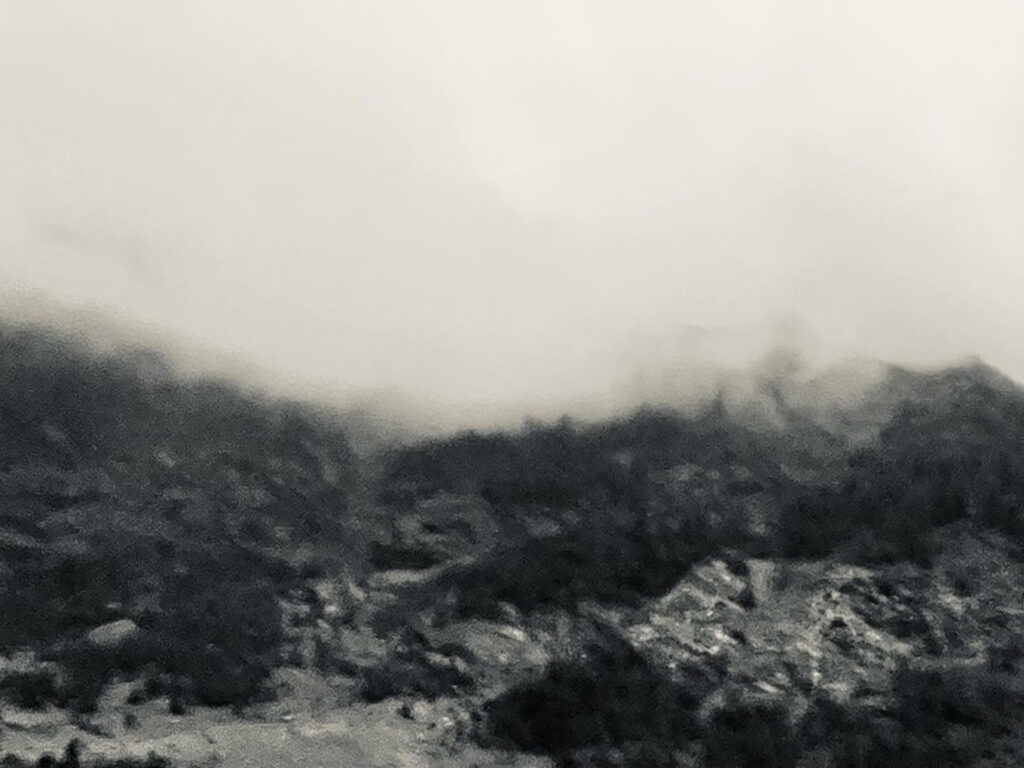
Although we stay atop the mountain for the span of a day, I lose my sense of anthropomorphic time — descending the mountain leaves a hollow within me, as if I’m leaving a place I’ve called home for ages. Here, time flows like the river, shifting with sky and patterns of disturbance, yet holding the slow perspective of trees and stone. By observing the alpine world, I feel as if I understand a sense of scales and interaction between them, often out of reach to humans. Here I see the fleeting being I am in the face of geologic time. Yet, I remember: my body is made from carbon, water, minerals — forest, river, stone. And in this way, I am endless. In this way, I am an evolution of mountains.
Willow Gatewood is an environmental scientist, interdisciplinary artist, storyteller, and biophile. Follow her on Instagram @willowg_music.
Resources:
Anderson, R. (2012). Trees of deep time are a portal to the past – and the future. Aeon. https://aeon.co/essays/trees-of-deep-time-are-a-portal-to-the-past-and-the-future
Kilpeläinen, A., Peltola, H. (2022). Carbon Sequestration and Storage in European Forests. In: Hetemäki, L., Kangas, J., Peltola, H. (eds) Forest Bioeconomy and Climate Change. Managing Forest Ecosystems, vol 42. Springer, Cham. https://doi.org/10.1007/978-3-030-99206-4_6
Mandolini, E., Bacher, M. & Peintner, U. (2025) Ectomycorrhizal communities of adult and young European larch are diverse and dynamics at high altitudinal sites. Plant Soil 506, 691–707. https://doi.org/10.1007/s11104-024-06721-8
Priyanka Velhal. (2025, May 15). How Forests “Remember” Climate Change. Nelda Foundation. Tree Planting Program. https://nelda.org.in/forest-remember-climate-change
Roveri, G., Crespi, A., Eisendle, F., Rauch, S., Corradini, P., Steger, S., Zebisch, M., & Strapazzon, G. (2024). Climate change and human health in Alpine environments: an interdisciplinary impact chain approach understanding today’s risks to address tomorrow’s challenges. BMJ global health, 8(Suppl 3), e014431. https://doi.org/10.1136/bmjgh-2023-014431
Plantings
Issue 52 – October 2025
Also in this issue:

Time, Layers, and Climate Futures: A Conversation with Dr. Gavin A. Schmidt
By Gayil Nalls
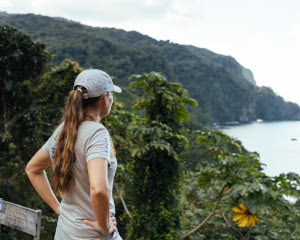
Nature’s Prescription for Our Future
By Dona Bertarelli
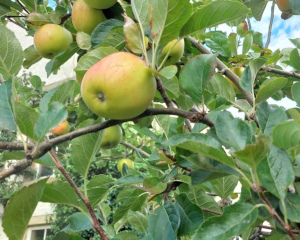
From Billion-Dollar Flows to Gooseberry Jam: Fraser Howie’s Voltairean Turn
By John Steele

Kneeling Down to Look Again – a Way Back to Earth
By Margherita Gandolfi
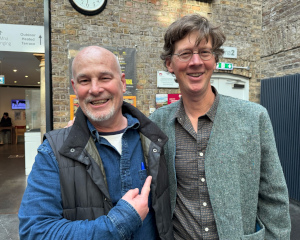
Manchán Magan’s Memories of the Bog
By Gayil Nalls

Eat More Plants Recipes:
Roasted Portobello Mushroom
By Gemma Monici
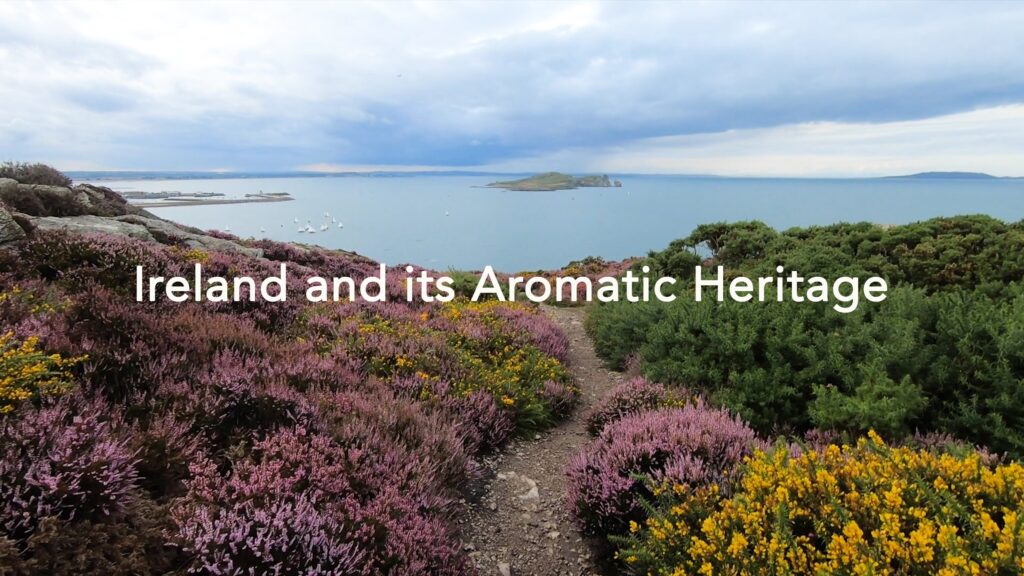
As Ireland transitions from the rich, smoky scent of peat-burning to a more sustainable future, its olfactory heritage is evolving. What will become the next iconic aromatic symbol of Ireland?
Click to watch the documentary trailer.

